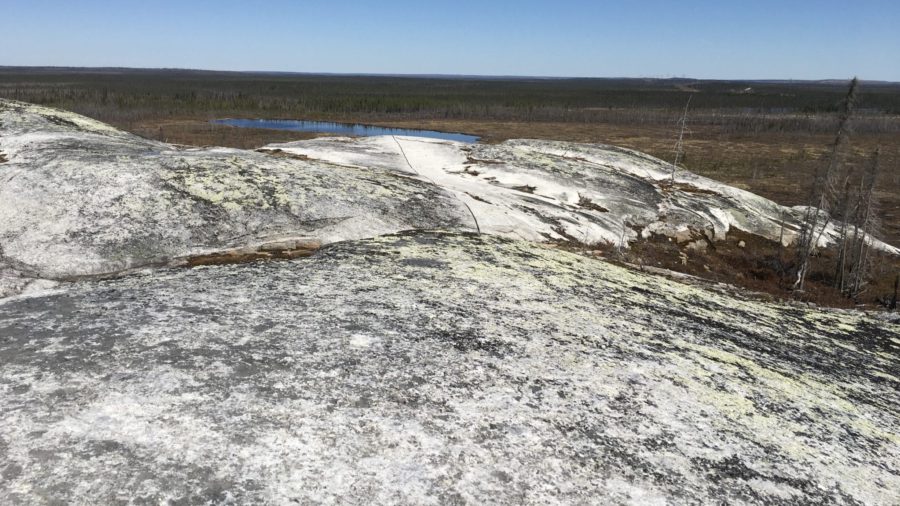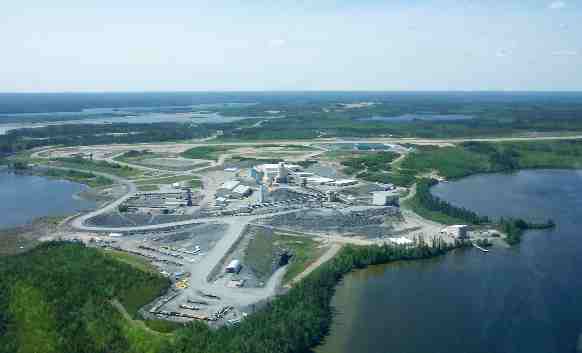Ontario Mining Association president Chris Hodgson reflects on lessons from the pandemic

Ontario Mining Association president Chris Hodgson. Credit: OMA
It is an understatement to say that 2020, the year the Ontario Mining Association turned 100 years old, was not the anniversary year we had imagined. While there was no opportunity to mark the occasion as our community may have wished, the crisis we all lived through revealed the resiliency, resourcefulness and strategic importance of the Ontario mining industry. Despite the challenges experienced, what we have learned is a cause for celebration, and the lessons will help define the future of our industry and the province.
Lesson 1: Our safety culture matters more than ever.
In moments of unprecedented crisis, such as the COVID-19 pandemic, an effective response hinges on leadership and a culture that enables rapid recognition and mitigation of risk. One of the defining features of the Ontario mining industry is our commitment to health and safety as a core value that influences decision making at all times and levels. As a result, Ontario is one of the safest mining jurisdictions in the world, and mining is one of the safest industries in Ontario, achieving a 96% improvement in lost time injury frequency over the past 30 years.
Our ongoing collaborative journey towards enhanced safety practices and the goal of zero harm, has meant that we are not only equipped with standards and procedures necessary to achieve a safe working environment, but also with deeply engrained norms that shape the mindsets, attitudes and behaviour of our people. For example, miners across Ontario, start their day with a safety meeting, bringing attention to risks, while ensuring that safety is at the forefront of their minds. The longstanding dedication to safety helps Ontario mining companies to build organizational resilience to enable proactive, flexible and innovative responses to unexpected circumstances.
From the onset of the public health crisis, mining companies were able to mobilize rapid collective action, adapting existing protocols and developing novel prevention and mitigation policies and practices to prevent the spread of Covid-19. They tapped into knowledge from other jurisdictions and shared strategies (including through the OMA), meaning that they were consistently ahead of the curve in everything from simple protective measures, such as universal mask wearing, to testing of employees as part of enhanced onsite screening processes. Their leadership was recognized by industry peers and the government, and they were asked to share their approaches.
It is a testament to the strength of our safety culture and our people’s expertise that, throughout a global pandemic and provincial emergency declaration, our industry managed to operate safely as an essential workplace in Ontario – sustaining northern economies and keeping people across the province employed. Undoubtedly, our safety culture has been strengthened by our current experiences, and will continue to be the basis of our competitive advantage in the future.
Lesson 2: Mining is essential – now and in the future.
If this was not clear earlier, it is obvious now that mining is indispensable for our response to, and recovery from, this crisis. As an industry providing the materials that are at the front end of our healthcare, manufacturing, and supply chains, mining was deemed essential by the province throughout the pandemic. As we plan for recovery, mining remains not just a provider of good, high-paying jobs; it is the foundation of our supply chains and integral to every sector in the economy, including the green-technology sectors.
Many see the pandemic as an inflection point in history – an opportunity to disrupt past practices that have not served us well and build a more resilient, sustainable economy. Prime Minister Trudeau recently pointed out that the mining sector “will be crucial for a green recovery and will help drive the clean transition that we need.” In his September 2020 Speech from the Throne, he emphasized the importance of mining in leading societal change, stating: “A good example of adapting to a carbon-neutral future is building zero-emissions vehicles and batteries. Canada has the resources – from nickel to copper – needed for these clean technologies. This – combined with Canadian expertise – is Canada’s competitive edge.”
Not only does Canada have the resources – including 13 of the 35 minerals that the U.S. has identified as critical to its economic and national security, Ontario holds great potential to uncover more of the commodities needed to meet growing global demand, as developed economies adopt net-zero emissions targets and green recovery stimulus policies. Moreover, we mine these commodities responsibly, and with a smaller carbon footprint than other jurisdictions. Companies like Tesla recognize this – the company has been seeking to buy Canadian low-carbon nickel, a key ingredient in the batteries that power the company’s electric cars. During the Covid-19 pandemic we saw a surge in exploration projects, a new gold mine (Pure Gold) that entered production, and the accelerated development of a cobalt refinery. The federal and Ontario governments announced a joint investment in electric vehicle and battery manufacturing. This is a strategic move, which has the potential to boost the local mining industry.
The greening of the global economy, including transforming the power generation grid, is undoubtedly good news for our sector, and commodities analysts are now predicting a mining supercycle – driven not just by economic growth, but by a global energy transition. Industry leaders such as Robert Friedland also stress that buyers will want to know that the commodities they are getting for their electric cars or lithium-ion batteries were mined responsibly. Speaking at the recent AME Roundup, he said that, “everything will be priced in relation to its ESG (environmental, social and governance policy) components.”
Ontario is in a remarkably good position to take advantage of these developments. However, we are still a high-cost jurisdiction, which drives profits down relative to other mineral producing regions. Strategic decisions will need to be implemented to improve Ontario’s competitiveness and ability to attract investment. As society demands swifter action on adopting clean technologies, it seems that these decisions will take on more urgency and garner greater consensus.
Lesson 3: Mines make good neighbours and employers.
The pandemic revealed how deeply intertwined Ontario mining companies are with the communities in which they operate. Miners were able to step in with meaningful Covid-19 assistance, providing not only significant financial contributions, but partnering with local organizations to address gaps and deliver the help that was most acutely needed – be it personal protective equipment for local first responders, or supplies for food banks facing greater demand. They were able to offer a variety of supports to vulnerable rural and Indigenous communities, providing logistical support for them to access critical supplies and resources, including testing solutions to help limit the spread of the virus. The list of actions they undertook is truly impressive.
One hopes that one of the enduring lessons of 2020 is a renewed awareness of the importance of a caring and respectful community. For OMA members, looking out for others was expressed in their Covid-19 relief efforts, and also in efforts to understand and address the challenges faced by employees and their families. This enhanced awareness of human psychological needs and mental health is changing work environments for many. Vale, for instance, has adopted a new working model that combines onsite, near-site, and remote jobs. A variety of on-the-job wellness, cultural and family programs that came into being or were expanded during the pandemic are here to stay. As Ontario mining continues to operate as an essential service, people and safety will be a cornerstone of responsible business behaviour that drives our sector’s success now, and into the future.
Chris Hodgson is president of the Ontario Mining Association (www.oma.on.ca).





Comments